The Confessions of a Caricaturist, Vol. 1, Harry Furniss [digital book reader txt] 📗
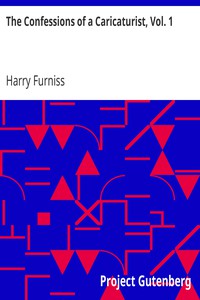
- Author: Harry Furniss
Book online «The Confessions of a Caricaturist, Vol. 1, Harry Furniss [digital book reader txt] 📗». Author Harry Furniss
(Green was at the time illustrating Besant's "Chaplain of the Fleet.")
 THE "JETTY."
THE "JETTY."
My second instance occurred about the same period. The author was the most delightful and entertaining of literary men of our time, Mr. James Payn. I was selected to illustrate the serial story in the Illustrated London News, and as in that also the author minutely describes the scene of the semi-historical romance, I, being a thoroughly conscientious artist, visited James Payn, then editor of Cornhill, in his editorial den in Waterloo Place, to talk the matter over. My notes were: "Jetty—Lovers meet—Ancient church—Old houses." But the "Jetty" was the important object—I must get that. I therefore started for the South Coast. Again I was forced to bow down before [Pg 96] my author's wonderful powers of imagination, for once more, in company with my wife, with a hireling to carry my sketching stool and materials, I walked a great distance in search of the jetty. Vain, vain! not a ghost of a jetty was to be seen. The menial could not enlighten us. At last we unearthed the "oldest inhabitant," who took us back to where a few sticks in the water alone marked where it stood "a many years ago." I tried to develop some of the powers of the late Professor Owen, when he constructed an animal from the smallest bone, and succeeded in "evolving" a jetty from the green remains of four wooden posts.
I forgave Payn as I forgave Besant. Both men were as genial as they were eminent, and but for the circumstances of illustrating their stories I might not have enjoyed their acquaintanceship. I also illustrated Payn's most charming story, "The Talk of the Town," for Cornhill Magazine. I never enjoyed any work of the kind so well as this—it has always been my regret Payn did not write another of the same period. I recollect, when I first saw him in Waterloo Place, I had just read an article of his in which he gave a recipe for getting rid of callers, which was to bring the conversation to an abrupt termination, say absolutely nothing, but steadfastly stare at your visitor until he left. I can vouch for its being a simple and effective plan.
 ILLUSTRATION FOR "THE TALK OF THE TOWN" (REDUCED).
ILLUSTRATION FOR "THE TALK OF THE TOWN" (REDUCED).By permission of the proprietors of "Cornhill Magazine."
When I entered his editorial sanctum the genial essayist received me most cordially, and looked the picture of comfort, [Pg 97] surrounded as he was by a heterogeneous collection of pipes. Presently, through the clouds of smoke through which he had chatted in that lively, vivacious manner peculiarly his own, he knocked the ashes out of his finished pipe and mutely stared point-blank at me till I, like the pipe, went out also. But before making my exit I reminded him that I had read the article I refer to, up to which he was no doubt acting, and that I was pleased and interested that he practised the doctrine he preached. Possibly this remark of mine was unexpected, and therefore somewhat disconcerted him for a moment, for he quickly replied, "Not at all! not at all! Fact is, I was rather upset before you came in by a miserable man who called to see me, and at the moment I was, � propos of him, thinking of a funny story about Theodore Hook I came across last night I never heard before. Poor Hook was at a smart dinner one evening, but instead of being as usual the life and soul of the party, he proved the wet blanket on the merry meeting, despite the fact that he, in all probability, had imbibed his stiff glass of brandy to get him up to his usual form before entering the house at which he was entertained. This most unusual phase of Hook's character surprised everybody present, so much so that his host ventured to remark that the volatile Theodore did not seem so merry as usual.
"'Merry? I should think not! I should like to see anyone merry who has gone through what I have this afternoon!'
"'What was that?' asked everyone, with one voice.
"'Well, I'll tell you,' said Hook. 'I have just come up from York in the stage coach, and I was rather late in taking my seat; the top was occupied to the full, so I had no alternative but to become an inside passenger. The only other occupant of the interior was a melancholy individual rolled up in a corner. He had donned his great-coat, the collar of which was turned right up over his ears. He stolidly sat there, never uttering a word, until I became fascinated by his weird appearance. By-and-by the sun sank below the western horizon, the inside of the coach became darker and darker, and more ghastly seemed the cadaverous stranger as the [Pg 98] blackness increased. The strain was too much for me. I could not keep silent another minute.
"'My good sir,' I said, 'whatever is the matter with you?'"
"'I'll tell you,' he slowly muttered. 'Some months ago I invested in two tickets in a great lottery, but when I told my wife of the speculation I had indulged in she nagged and nagged at me to such a frightful extent that at last I sold the tickets.'
"'Well?'
"'Well, do you know, sir, to-day those two numbers won the two first prizes, and those two prizes represent a sum of money of colossal magnitude!'
"'Goodness gracious me!' I shouted. 'If that had happened to me it would have driven me to desperation! In fact I really believe that I should have been frantic enough to cut my throat!'
"'Why, that's just what I have done!' replied the stranger, as he turned down his collar. 'Look here!'"
 "THAT'S JUST WHAT I HAVE DONE!"
"THAT'S JUST WHAT I HAVE DONE!"
This ghastly tale reminds me of one of my earliest and most trying experiences in illustrating stories. I had made a very careful drawing to illustrate a startling episode in a novel by Mrs. Henry Wood. Naturally it was designed on a block, and represented the hero having just swallowed poison after committing a murder. The face in the drawing was everything, and I had taken the greatest pains to depict in the distorted features all the authoress desired—in fact, I was rather proud of it. The authoress was pleased, and the block was sent to the engraver. I was then about twenty—photographing a drawing on to wood was unknown, and process work was not invented—all drawings were made on boxwood and engraved by hand. To my horror the engraver returned the block to me a week afterwards with an apologetic note. The face had been destroyed in the engraver's hands, and he had "plugged the block"—that is, another piece of wood had been inserted where [Pg 99] the hero's head had been, and whitened over, for me to draw another. The rest of the design had been engraved. That face gone! How could I conjure it up again on that unsightly, isolated patch of block, with all the rest of the drawing engraved and therefore my lines undiscernible? I did my best. When it was printed it was seen that the face did not fit on the neck properly, and to my chagrin I received a sarcastic letter from the editor to inform me that I had made a mistake. The hero had swallowed poison and had not, as I supposed, cut his head off!
 SPECIMEN OF JAMES PAYN'S WRITING.
SPECIMEN OF JAMES PAYN'S WRITING.
Another illustration of the conscientious illustrator in search of the truth. I had to introduce the Reformers' Tree, Hyde Park, into a picture. Now we are always hearing about the Reformers' Tree in reference to demonstrations in the Park, so I went in search of the historical stump. The first person to whom I put a question as to its whereabouts pointed to a huge tree in flourishing condition. I had just sketched in its upper branches when it somehow occurred to me that it would be just as well to ask someone else and make assurance doubly sure. This time I interrogated a policeman.
"No, that ain't it; that there row of hoaks is wot people calls the Reformers' Tree."
I started another sketch on the strength of this statement, but feeling a bit dubious over his assertion that the one tree was comprised of a whole row, I tackled the "oldest inhabitant," an ancient and pensioned park-keeper, who luckily hove in sight.
[Pg 100]
"Hover there," he replied, gruffly, pointing to a stump that resembled the sole remaining molar the old man possessed.
This stump was picturesque. It must be the Reformers' Tree. Result—another sketch, which I showed to the gatekeeper at the Marble Arch.
"Reformers' Tree? Why, there ain't no such thing in the Park." And I really believe there isn't. It is a myth, and merely exists in the fertile brain of the descriptive author or the imagination of the agitator.
 THE TYPICAL LOVERS IN ILLUSTRATIONS OF NOVELS.
THE TYPICAL LOVERS IN ILLUSTRATIONS OF NOVELS.
After James Payn's "Talk of the Town" no book has given me such pleasure to illustrate as F. C. Burnand's "Incompleat Angler." The combination of the picturesqueness of Isaak Walton with the humour of Burnand could not be otherwise, but most unfortunately the form of its publication ruined the effect of the drawings. Over this, too, the author and I talked—no, not exactly—to be exact we laughed over it. I dined with Burnand, and afterwards in his study he read it to me, and as he frankly admitted he never laughed so much at anything before.
The illustrator's difficulties by no means end when the author is satisfied. Many authors give you every facility, and hamper you with no impossibilities; but then steps in the editor, especially if he be the editor of a "goody" magazine. Novels will be novels, and love and lovers will find their way even into the immaculate pages of our monthly elevators. I once found it so, and certainly I thought that here was plain sailing. A tender interview at the garden gate. She "sighed and looked down as Charles Thorndike took her hand"—unavoidable and not unacceptable subject. Lovers are all commonplace young men with large eyes, long legs, and small moustaches (villains' moustaches grow apace); moreover, lovers, I believe, generally take care to avoid observation; but no! it appears that "our [Pg 101] subscribers" have a stern code which may not be lightly infringed. A letter from the editor rebukes my worldly ways:
"Dear Sir,—Will you kindly give Charles Thorndike a beard, and show an aunt or uncle or some chaperon in the distance; the subject and treatment is hardly suitable otherwise to our young readers."
Sometimes a publisher steps in and arranges everything, regardless of all the author and artist may cherish.
Years ago a well-known but not very prosperous publisher sent for me, and spoke as follows:
"Now, Mr. F., what I want is to knock the B.P. with Christmas. The story is all blood and murder, but don't mind that—you must supply the antidote; put in the holly and mistletoe, plenty of snow and plum-pudding (the story was a seaside one in summer time). I like John Tenniel's work—give us a bit of him, with a dash of Du Maurier and a sprinkling of Leech here and there; but none of your Rembrandt effects—they are too dark, and don't print up well. Never mind what the author says; he hasn't made it Christmas, so you must!"
It is equally difficult to comply with an editorial request such as this: "The story I send you is as dull as ditch-water; do please read it over and illustrate it with lively pictures."
But some authors are their own publishers, and they are then generally more careful of the illustrations. Perhaps the most exacting of all authors was "Lewis Carroll."

he name of Charles Lutwidge Dodgson is practically unknown outside of Oxford University, where he was mathematical lecturer of Christ Church; but the name and fame of "Lewis Carroll," author of those inimitable books for children, both young and old, "Alice's Adventures in Wonderland" and "Through the Looking-glass and what Alice found there," are known and beloved all over the world. His
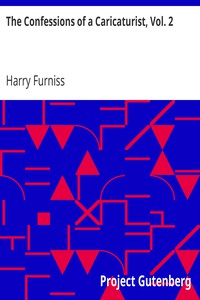

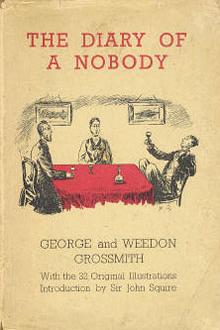
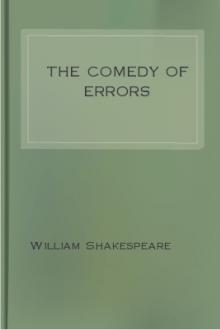
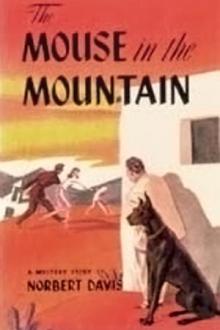
Comments (0)